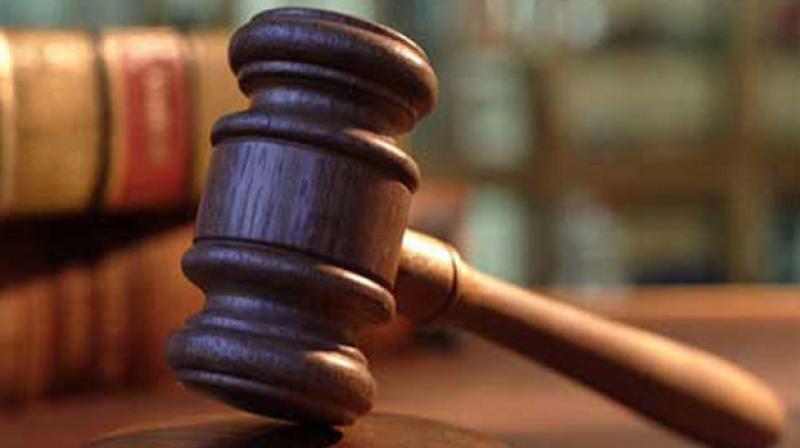Live streaming of court hearings not desirable

Imagine live streaming of the hearing in the Ramjanmabhoomi land dispute case, before the Supreme Court. Senior Advocate K.Parasaran, representing the Ram Lalla is expounding on Maryada Purushottam Ram and Tretha Yugam of 30,000 years ago on the belief of the Hindus on the birthplace of Ram. Rajeev Dhavan or Kapil Sibal, opposing counsel get up and pass a taunting comment or two. This ‘two-bit takeout’ is picked up by 24 x 7 channels and the exchange goes viral. The vernacular channels add colour in translation. It may stoke the emotions of those on the fringes, on both sides, not a small number, which may suggest that 1992 Babri Masjid demolition and 1993 Mumbai riots may seem like picnics. Not an imaginary scenario to dread but a real, live possibility in the realm of India today.
On February 9, the First Bench of the Supreme Court, led by the Chief Justice of India, urged the Central Government to respond to possible live streaming of Supreme Court sittings, at least the Constitution Bench matters as in the Aadhaar challenge. The petitioners have passionately argued that India was a throbbing democracy and the people need to know the goings-on in such matters before the top court, which has now come to occupy the minds and ears of the ordinary citizen like never before. The petitioners have cited live coverage of court proceedings in the US or even delayed telecast of recorded proceedings in support of their call for transparency.
For instance, in the US there is near live television network on C-Span, with regard to proceedings before the higher courts in the 50 states. It is only before the Supreme Court of Untied States (SCOTUS) that live television is not allowed. The prohibition goes back to a Federal law of 1946 vintage which prohibited photography and broadcast and expanded to include televising in 1972. Then, in 1999, in the face of a failed attempt before US Senate to pass a legislation allowing invasion of live television cameras into SCOTUS, The Nine yielded space and allowed release of audio tapes of the submissions of the respective counsel after conclusion of the hearings. There, it stays, till now. But the debate rages on as to why SCOTUS which impacts the segregation laws (Brown -Vs- Board of Education), Same-Sex marriage (Obergefell -Vs- Hodges), Abortion (Roe -Vs- Wade) et al ,directly impacting the lives of the ordinary Americans, The Nine should refuse to grant access for a live telecast. Do they not owe openness and transparency, which they preach to the world ask spirited bodies.
The Senate Judiciary Committee has held several hearings with academicians, retired and sitting judges deposing on the pros and cons of such live television. Incumbent Chief Justice Roberts of SCOTUS said, "There's a concern [among justices] about the impact of television on the functioning of the institution. We're going to be very careful before we do anything that might have an adverse impact."
But the typically sound and abrasive take-away is from the late, lamented Associate Justice Antonin Scalia, “I wouldn't mind having the proceedings of the court, not just audio, but televised, if I thought it would only go out on a channel that everyone would watch gavel to gavel. But if you send it out on C-SPAN, what will happen is for every one person who sees it on C-SPAN gavel to gavel so they can really understand what the court is about, what the whole process is, 10,000 will see 15-second takeouts on the network news, which, I guarantee you, will be uncharacteristic of what the court does. So I have come to the conclusion that it will misinform the public rather than inform the public to have our proceedings televised.”
In a soberly measured environment, given to oral explosions, at times, in the cauldron of heated exchanges, one doubts whether the invasion of television cameras into the court halls would result in a healthy dose of transparency, aiding the administration of justice or may have unintended deleterious consequences.
More often than not, the proceedings are dull, drab, boring and technical, to the untrained, as they ought to be. There is therefore an inexorable, lurking danger that the Court halls may turn out to be platforms with performers and not judges and advocates, in serious pursuit of justice. Advocates in particular may be tempted to address a larger audience and it may well kindle a tinderbox. Who knows?
If in the oldest democracy there is a fear of '15 second take outs' hijacking serious debates, the Union of India may do well to err on the side of caution, as we may not be mature enough to handle such ‘15 second take-outs’. In the name of open justice, we ought not to be opening up flagrant consequences.
(The author is a practising advocate in the Madras High Court)

